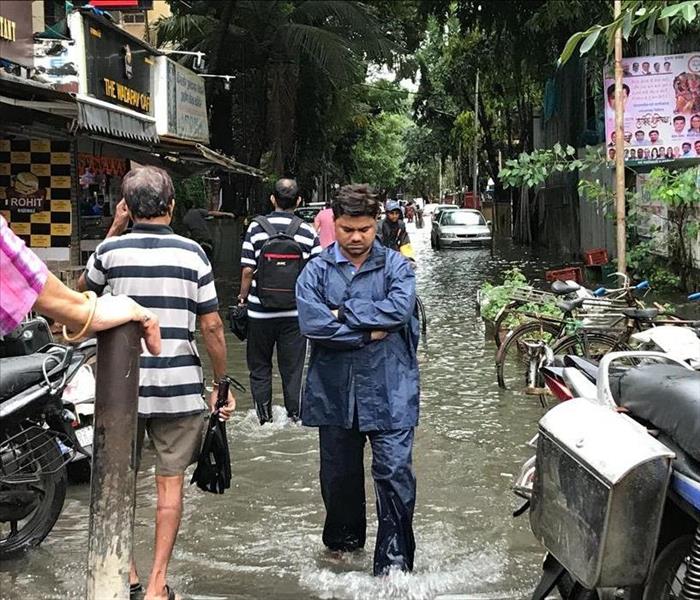Cleaning Contaminated Floodwater Damage After a Storm
7/9/2020 (Permalink)
Contaminated groundwater, referred to as “category 3,” can devastate a home even more than your average water loss. This contaminated water will destroy anything that absorbs it, and that damage will get exponentially worse the longer it takes you to get rid of it. Often, this type of water gets into the home during a storm, when water is liable to flood into your property, especially your basement.
But what’s so bad about flood water? What kind of damage can it cause? And how do you get rid of it? We’ll tell you.
What’s so bad about groundwater in a flood?
The worst thing about the water that flows into your property during a flood isn’t the water – it’s what the water brings with it. Rushing waters pick up all sorts of contaminants on their way to your home or business. These contaminants include the obvious, like mud and debris, but can also include viral pathogens, toxins and even sewage that has backed up out of drains. You don’t want any of these things flowing into your property.
What’s worse, water has a tendency to spread far beyond the initial point of entry. Water can be absorbed in all kinds of hard-to-reach places, like under tile, behind baseboards, and deep into carpet and subflooring. This tendency is especially harmful because once that water enters your home, the clock starts to tick. The faster you can get that water out and off of your floors, the less damage there will be. SERVPRO techs excel at completely extracting water and drying affected materials, even in the hard-to-find areas.
How do you clean and restore groundwater damage?
Since groundwater is often contaminated, our technicians often wear protective clothing, eye protections and respirators to keep pathogens from being ingested or inhaled. In some cases, they may also apply certain treatments before the mitigation process begins for maximum safety.
We often begin the process with controlled demolition. Porous materials that are contaminated are difficult to sanitize completely, meaning that it’s often more affordable and more efficient to tear them out and focus on reconstruction.
The amount of demolition depends on the material. With sheetrock and drywall, for instance, our technicians often have to cut in several inches above the waterline to both remove any damaged material and open up the cavity of the wall for drying.
Grouted, sealed ceramic tile, meanwhile, usually fares better, since it can keep out much of the contaminated groundwater. Adhesive tiles, meanwhile, may not be so lucky, though we can often remove, clean and reuse those tiles to save home and business owners money.
Contaminated carpets fare worse. Saturated carpet can almost never be sanitized to an acceptable level for reuse and is usually cut out and disposed of as a biohazard. Anything that is disposed of is documented for insurance purposes.
Once demolition has been completed, drying can begin. Assuming that tile and carpet has been removed, our team will then focus on drying the subfloor completely while it is exposed. Usually, this entails the use of drying mats, forced air flow, Injecti-Dry systems and other industry-leading techniques to completely dry the subfloor before tile and carpet is reinstalled and reconstruction begins in earnest.
But it’s not just your structure that can be contaminated by groundwater. Your possessions can be exposed to dirty floodwater as well, with mixed results. Anything that’s porous will likely need to be disposed of, as it will not be able to be acceptably sanitized. Non-porous items, meanwhile, especially those that can be subjected to immersion cleaning, more often have positive outcomes. Our array of proprietary cleaning agents, biocides, and antimicrobial solutions help us to achieve the best outcomes possible for our customers.
Dealing with a flood or water loss yourself after a storm? We’re here to help. Call SERVPRO of West Seneca/Lancaster at 716-674-1103 when you need us!




 24/7 Emergency Service
24/7 Emergency Service